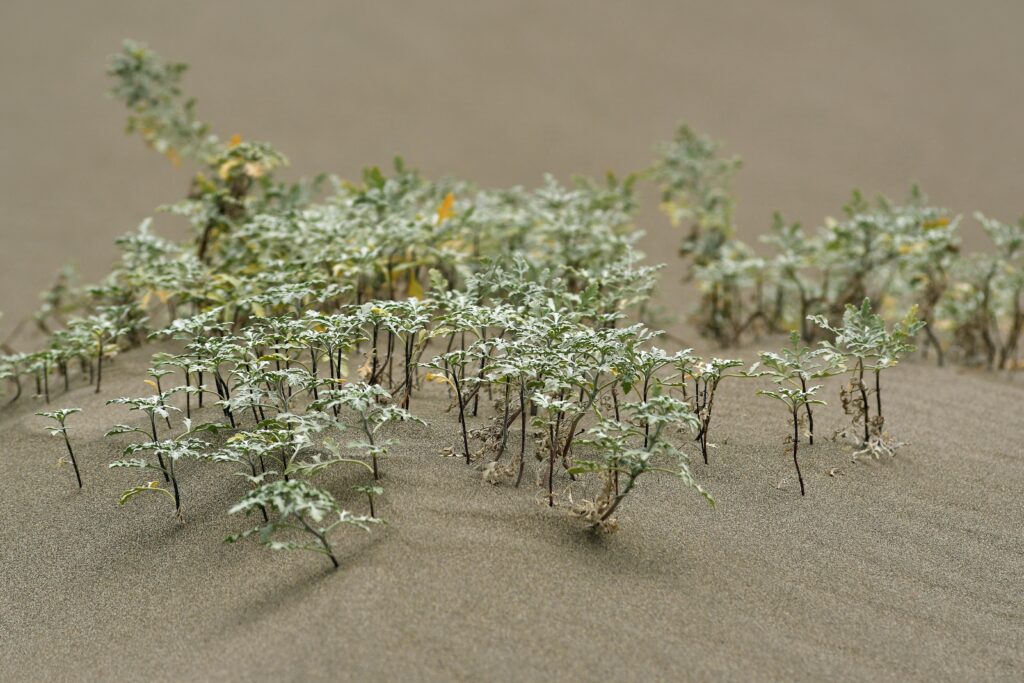Gardening in desert climates presents unique challenges, from scorching temperatures to minimal rainfall. However, many beautiful and hardy plants are well-adapted to these conditions, offering vibrant color, structure, and ecological value without demanding constant watering. Whether you’re building a xeriscape garden or simply want a low-maintenance landscape, these ten drought-tolerant plants are perfect choices for thriving in arid environments.

1. Agave (Agave spp.)
Agaves are iconic desert plants known for their rosettes of thick, spiny leaves and striking symmetry. They come in various sizes and shades, from the large Agave americana to compact varieties like Agave parryi. Agaves store water in their leaves and require minimal care once established. Most prefer full sun and well-draining soil and can handle extreme heat and drought effortlessly.
2. Desert Marigold (Baileya multiradiata)
This cheerful perennial adds a splash of golden yellow to desert gardens. Blooming nearly year-round in hot climates, desert marigold is both drought-tolerant and resilient against poor soils. Its fuzzy gray-green foliage helps retain moisture and reflect sunlight, making it a tough yet lovely ground cover or border plant. It attracts pollinators and reseeds readily, creating a natural meadow effect over time.
3. Red Yucca (Hesperaloe parviflora)
Despite its name, red yucca is not a true yucca, but it shares similar toughness. With slender, arching leaves and tall flower spikes bearing coral-red tubular blooms, red yucca is a hummingbird favorite. It thrives in full sun, requires little water, and works well in containers or mass plantings. The flowers appear from spring through summer and are followed by attractive seed pods.
4. Texas Sage (Leucophyllum frutescens)
Texas sage, also known as barometer bush, is a silver-leaved shrub that erupts with purple or pink flowers after rainfall or high humidity. It is exceptionally drought-tolerant and works well as a privacy hedge or ornamental shrub. Its fuzzy leaves reflect sunlight, reducing water loss, and the plant itself is highly resistant to pests and diseases.
5. Penstemon (Penstemon spp.)
Penstemons, or beardtongues, are native wildflowers that offer vibrant spikes of pink, red, purple, or blue flowers. They are ideal for desert gardens because they thrive in poor soils and require minimal watering. Penstemons attract bees, butterflies, and hummingbirds, and their delicate blossoms bring a softness to rocky or dry landscapes.
6. Brittlebush (Encelia farinosa)
This desert native is a common sight across the American Southwest. Brittlebush sports silvery foliage that conserves water and bright yellow daisy-like flowers in spring. It is excellent for erosion control on slopes and adds a soft texture to dry landscapes. True to its name, the stems are brittle, but the plant itself is hardy and long-lived in arid environments.
7. Desert Willow (Chilopsis linearis)
For those seeking a small flowering tree that performs well in the desert, desert willow is a standout. This deciduous tree produces trumpet-shaped flowers in shades of pink, lavender, or white that resemble orchids. Its airy canopy offers dappled shade, and it requires little supplemental water once mature. Desert willow is ideal for wildlife-friendly gardens.
8. Aloe Vera (Aloe barbadensis miller)
Beyond its medicinal properties, aloe vera is a striking succulent that does exceptionally well in dry climates. Its fleshy, serrated leaves store moisture, making it nearly impervious to drought. Aloe vera produces yellow or orange flower spikes and can be grown in containers or rock gardens. It needs protection from frost, but thrives in sunny, arid environments.
9. Sundrops (Calylophus hartwegii)
Sundrops offer a carpet of golden blooms during the hottest parts of the year. Native to the Southwest, this low-growing perennial is well-suited for ground cover or rock gardens. It requires very little water and attracts pollinators while maintaining a tidy, compact growth habit. Sundrops bloom repeatedly from spring into fall.
10. Palo Verde (Parkinsonia spp.)
Palo Verde trees are not only drought-tolerant but also nitrogen-fixing, helping to improve soil health. Their green bark carries out photosynthesis even when the tree has shed its leaves to conserve moisture. These small to medium-sized trees produce yellow blooms in spring and offer excellent shade and structure in desert gardens.
Final Thoughts
Designing a desert garden doesn’t mean sacrificing beauty or diversity. With the right selection of drought-tolerant plants, you can create a thriving, sustainable landscape that embraces the climate rather than fights against it. These ten plants offer a mix of form, function, and seasonal color while minimizing the need for irrigation and maintenance—perfect for both beginner and experienced gardeners in arid zones.
By choosing wisely and planting appropriately, you can cultivate a desert oasis that not only survives, but flourishes.
